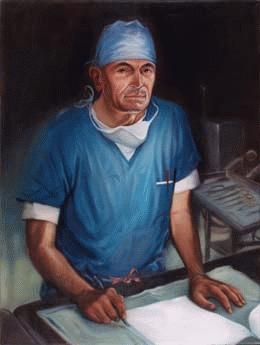On January 1, 1972, Seattle heart surgeon Lester R. Sauvage (1926-2015) and his associates at the Reconstructive Cardiovascular Research Center publish "Prosthetic Replacement of the Aortic Valve," summarizing 10 years of research on the design and function of artificial aortic heart valves. The publication marks an important contribution to the development of artificial valves.
Sauvage established the center (later renamed Hope Heart Institute) in a small house across the street from Providence Hospital (now Swedish Medical Center) in 1959. He was joined in 1961 by research pathologist Knute E. Berger (1915-1990), who worked closely with Sauvage for more than 20 years. Among other physicians involved in the center’s early clinical research were Robert F. Viggers, Stephen J. Wood, and Gordon A. Logan.
Although best known for his research into the development of venous bypass grafts for blocked hearts, Sauvage also directed crucial experiments involving repair or replacement of damaged heart valves. Initially, he sought ways to repair leaky valves with tissue from the pericardium (the sac around the heart). Later, he and his associates began investigating artificial valves. One series of experiments, reported in January 1965, described the effectiveness of several different methods of valve replacement in calves. Another study looked at the hydraulic characteristics of prosthetic valves. By 1968, the team was investigating methods of preventing blood clots from forming on artificial valves.
Sauvage and other researchers had learned that the mitral valve (which controls blood flow between the upper and lower chambers in the heart) can be repaired; but the aortic valve (which regulates blood flow from the heart into the aorta -- the body's main artery) must be replaced if it becomes damaged. The options for replacements include natural tissues (valves retrieved from animals, human cadavers, or the patient’s own body); or artificial materials. So-called mechanical or artificial valves last longer than those made from human or animal tissues, but they have a greater tendency to attract blood clots.
By the late 1960s, Sauvage and his team were exploring ways to prevent or at least minimize clotting on artificial valves. Eventually, they developed a method for using a patient’s own blood to "pre-clot" artificial grafts. The process minimized internal bleeding and helped promote healing after the grafts were implanted. By 1970 the team had published nearly 40 articles on the healing and design of artificial arteries and heart valves. Prosthetic Replacement of the Aortic Valve (published in Springfield, Illinois, by the Charles C. Thomas Company), summarized a decade of research and stood as a standard text in the field for years to come.

